Aquarium Rust is a problem for aquariums because it can damage fish health. Rust can originate from many sources, including water and air pollution, metal objects such as aquarium decorations or plumbing fixtures, and other plants in the tank.
When rust gets into the fish’s bloodstream, it forms iron oxide clumps that block oxygen delivery to the tissue cells. The result is often noticeable signs of illness, such as distressed swimming or difficulty breathing.
In extreme cases, rust poisoning will cause the death of fish within days or weeks after exposure. Possible symptoms of rust toxicity in aquaria include thin owners everywhere wondering what all the rust talk is about.
We’ll also discuss is rust in aquariums a problem and ask if metal can harm fish tanks. We’ll give you a few tips for avoiding rust and keeping your fish healthy.
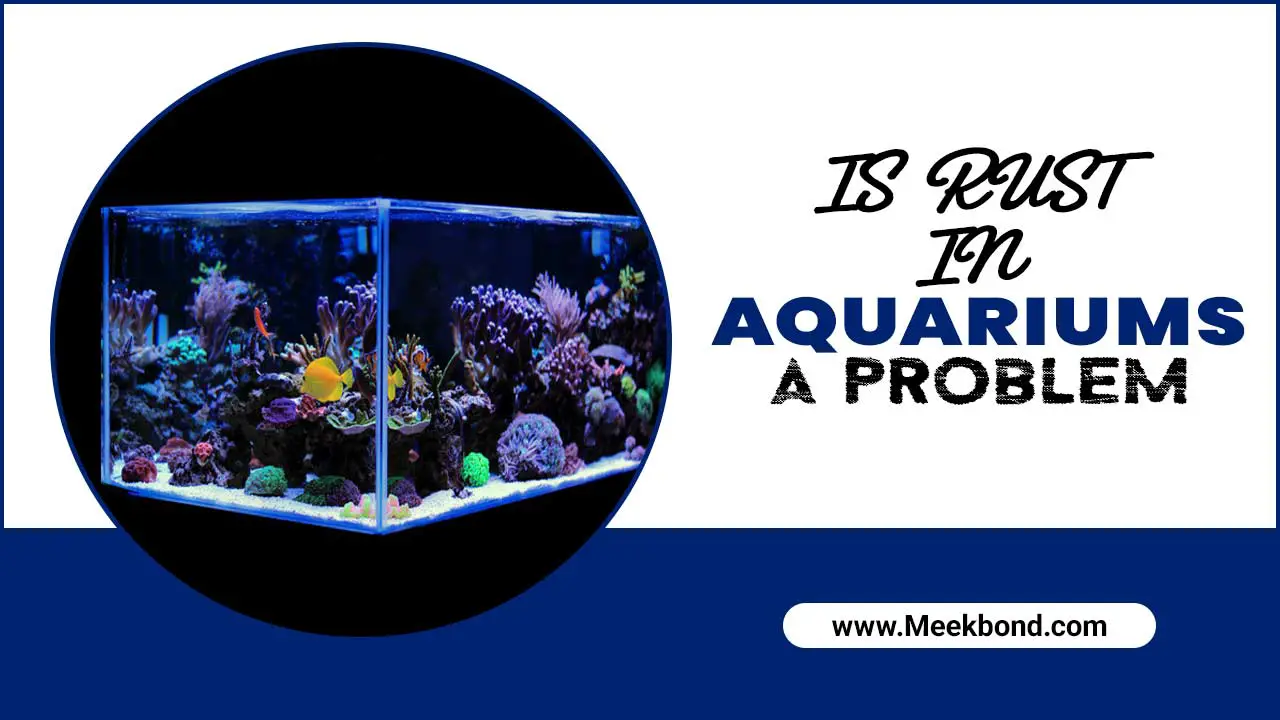
What Is Rust
Rust is a common and serious fish health concern that can quickly spread and cause serious damage to your fish. It’s caused by water not flowing freely and is most common in freshwater tanks. However, rust can also occur in saltwater aquariums.
When it forms, it appears as small patches on the surface of fish and can quickly spread. If left unchecked, rust can cause serious health problems for fish, including death. If you notice rust forming in your aquarium, take appropriate action to prevent further damage to your fish.
What Does Rust Look Like?
Rust is a problem that aquarium owners everywhere are increasingly concerned about. It’s a fungus that can start affecting fish and invertebrates from the water’s surface to near the bottom. It causes ulcers on the fish’s skin, reduced appetite, and rapid death – often within a few days or weeks. If left untreated, rust will spread throughout an aquarium and cause major problems for your fish and aquatic creatures.
How Can Rust Form In An Aquarium?
Rust can form in an aquarium when water circulation is slowed down. Many factors, including a dirty filter or fish tank, can cause this. New tanks also commonly contain high levels of bacteria and other microorganisms that may cause rust formation.
Rust formation is caused by water not flowing freely. This can be due to various factors, including poor filtration or inadequate aeration. Additionally, metal objects (such as plumbing and tank hardware) can create an environment that encourages rust growth. If your fish tank isn’t properly sealed – allowing air and moisture to escape -rust will flourish.
Is Rust In Aquariums A Problem? The Revealed Answer
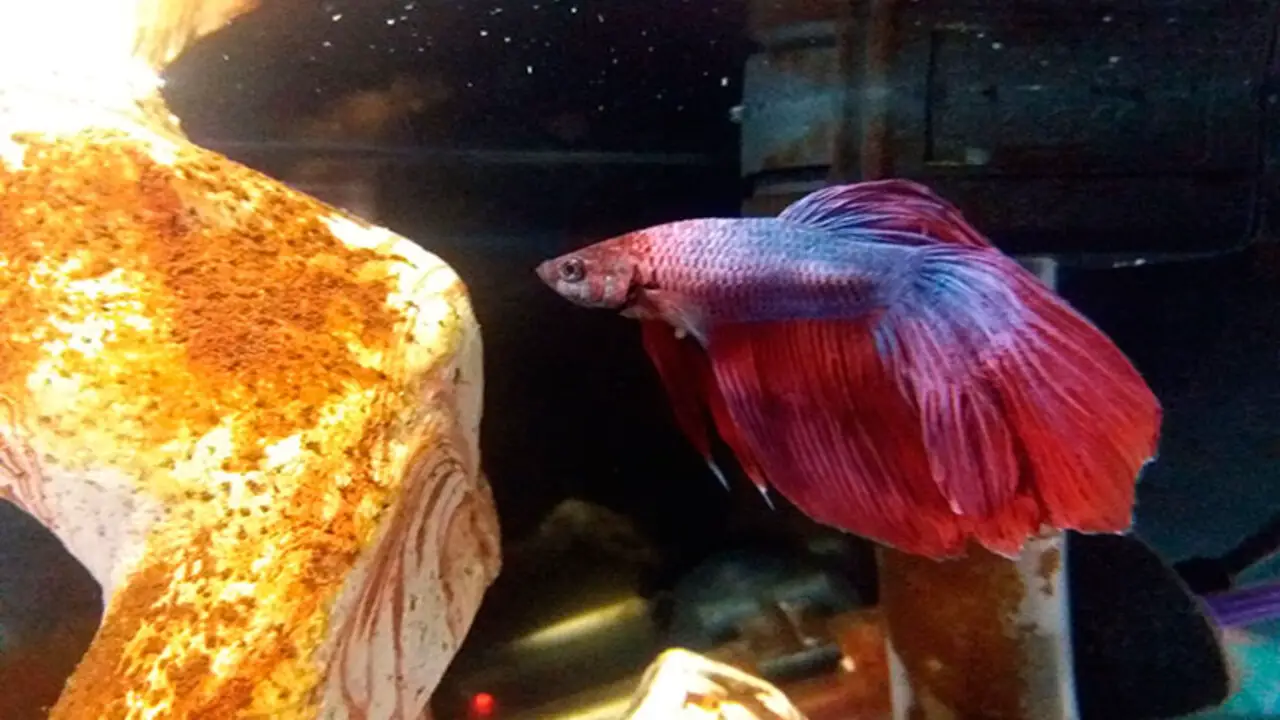
Rust in aquariums can indeed be a problem. The oxidation of iron causes rust, and when it occurs in an aquarium, it can pose risks to both the tank’s inhabitants and the ecosystem’s overall health. Is rust in aquariums a problem? It can release harmful substances, such as iron oxide particles and potentially toxic metals, into the water.
These substances can negatively impact the water quality, leading to imbalances in pH levels and increased levels of heavy metals. Additionally, rust can corrode equipment and decorations in the tank, causing damage and potentially releasing even more harmful substances into the water.
Rust can damage the fish’s skin and internal organs if left unchecked. There are several ways to treat rust and protect your fish, so keep an eye on water quality and pH levels to ensure everything goes well.
It is important for aquarium owners to regularly inspect their tanks for signs of rust and take appropriate measures to prevent or address any issues that arise. This may include using non-corrosive materials for equipment, maintaining proper water chemistry, and promptly removing any rusted items from the tank.
Can Rust Kill Fish?

Rust can indeed harm fish and potentially lead to their death. When metal corrodes due to exposure to water or moisture, it forms rust. If there is rust present in a fish tank or aquarium, it can release harmful chemicals and toxins into the water.
These chemicals can negatively affect the water quality and can be toxic to fish, causing stress, illness, and even death. It is important for fish owners to regularly inspect their tanks for any signs of rust and take immediate action to remove or replace any affected equipment or materials.
Rust in aquariums can be a problem, as it has the potential to harm fish and affect water quality. When metal components in an aquarium, such as heaters or filters, rust, it can release harmful substances into the partial water that can be toxic to fish. Additionally, rust can alter the pH levels and overall water chemistry, creating a stressful environment for aquatic life.
To prevent rust from causing harm, it is important to regularly inspect and maintain aquarium equipment, ensuring that any rusty or corroded parts are promptly replaced. Regular water changes and proper filtration can also help to maintain clean water conditions and minimize the risk of rust-related issues in the aquarium.
How Does Rust Get Into Tanks And Aquariums?
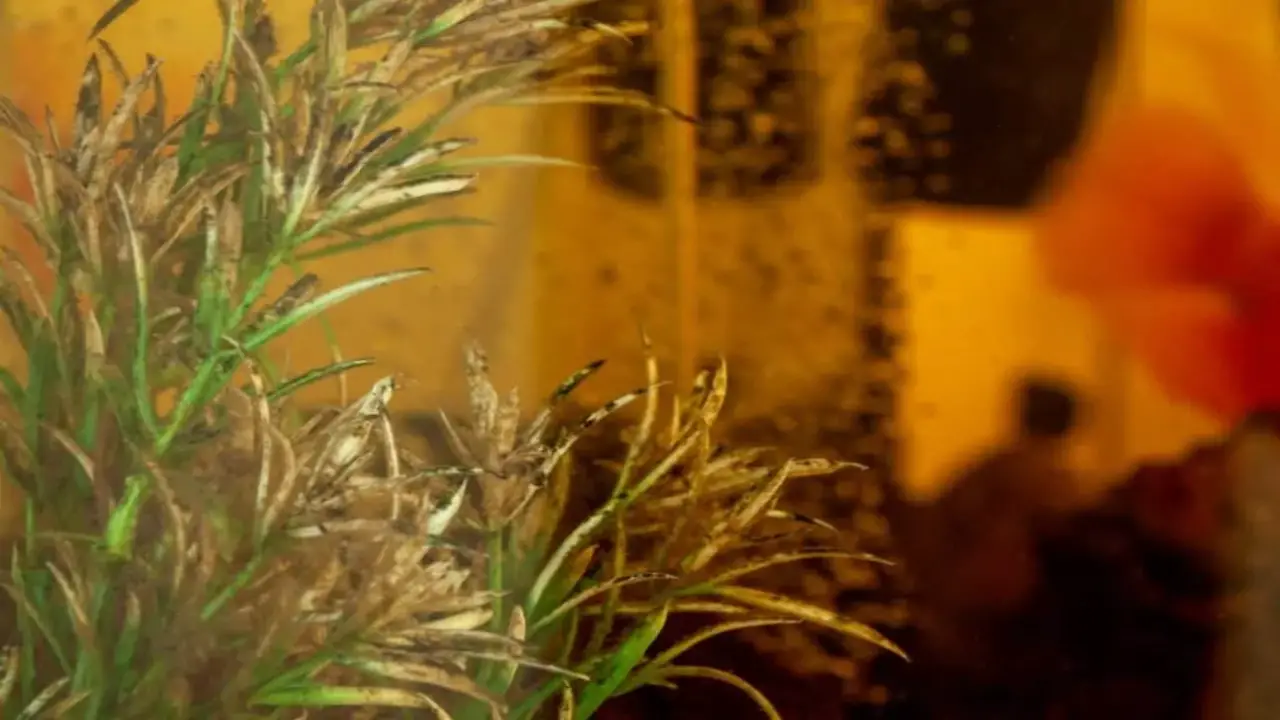
Rust can find its way into tanks and aquariums in various ways. One common source is the water supply itself. If the water pipes or storage tanks that supply the tank or aquarium come from iron or have actual rust components, amounts of rust particles can contaminate the water.
Additionally, if the tank or aquarium comes from metal and is not properly coated or sealed, it can be susceptible to rust formation over time. Another potential source of rust is any metal equipment or decorations within the tank or aquarium that may corrode and release rust particles into the water.
To prevent rust from entering tanks and aquariums, it is important to regularly inspect and maintain all metal components, use appropriate coatings or sealants on metal surfaces, and ensure that the water supply is free from rusty contaminants.
What To Do If Aquarium Is Already Full Of Rust?
Rust is a common problem in tanks and aquariums, and it cannot be easy to prevent from happening. If it does, there are several steps you can take to help restore fish health. First, treat with an anti-rust agent like CorrosionX orazione™.
If that isn’t effective, remove any dead or dying fish and add new healthy aquatic life like Corydoras catfish or tetras. If all else fails, consider getting a new tank or aquarium. However, if you’re starting a new tank or aquarium, there are several things you can do to reduce the chances of getting rust:
Use distilled water when filling your tank or aquarium. This will reduce the amount of chlorine and other chemicals that can promote Rust growth. Use a biological filtration system to remove harmful bacteria and protozoa. This will help keep your tank or aquarium clean and free from Rust growth. Use an aquatic plant-like crypt that attracts beneficial insects like damselflies, which are natural predators for Rust organisms.
What Are The Signs Of Rust In Aquariums?
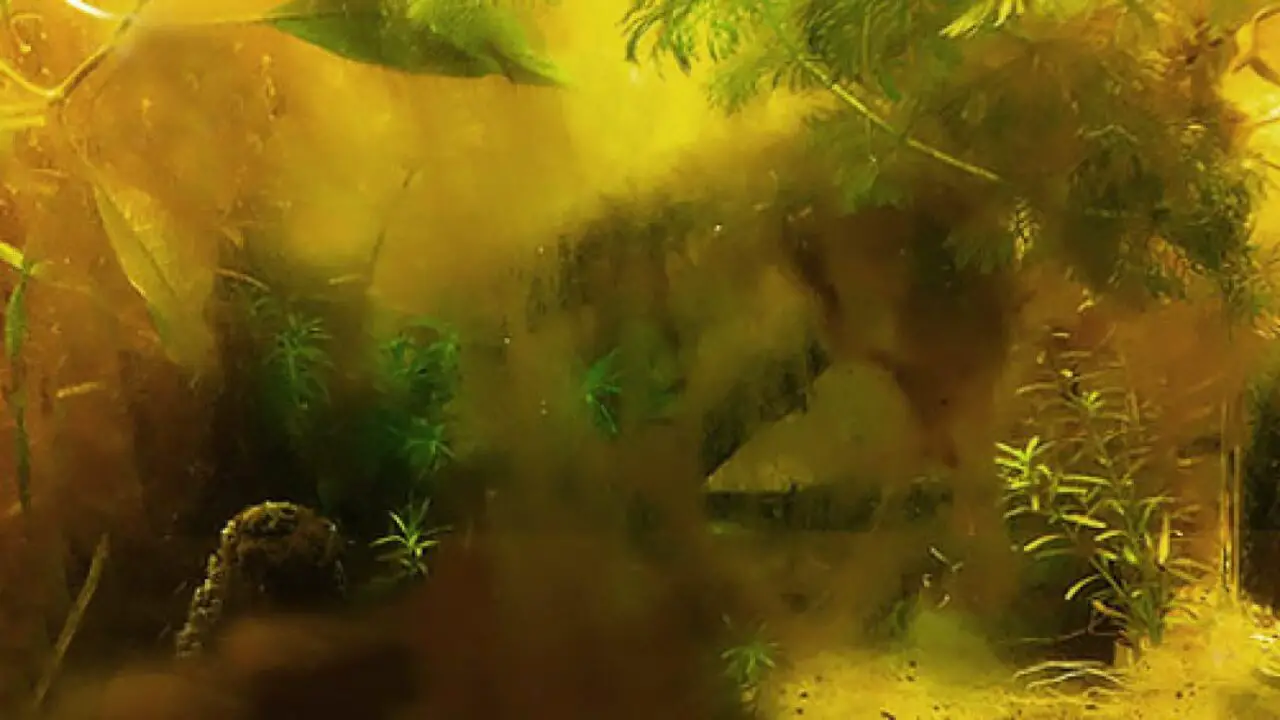
Aquariums are a source of entertainment and relaxation for many but can also be a source of worry. That’s because rust signifies that your aquarium water quality is off and needs to be corrected. If you’re seeing any of the following signs of rust in aquariums, it’s time to take action: fish who act sick or have yellowing skin and fins, water that smells bad, or cloudy water.
There are a few signs of rust in an aquarium; if so, it is important to take action. Some of the most common signs of rust in aquariums include:
- The presence of brown or black patches on any surface of the tank
- The fish appears to be sick or lethargic
- Water being cloudy or discolored
- Fish failing to eat or exhibiting unusual behavior
Fixing the water quality issue will not only save your fish. But also helps maintain a healthy aquarium environment. Add a water conditioner to your aquarium monthly and change at least half the water weekly. Finally, regular water changes will help keep your aquarium Rust-free.
Ways To Combat Rust In Aquariums
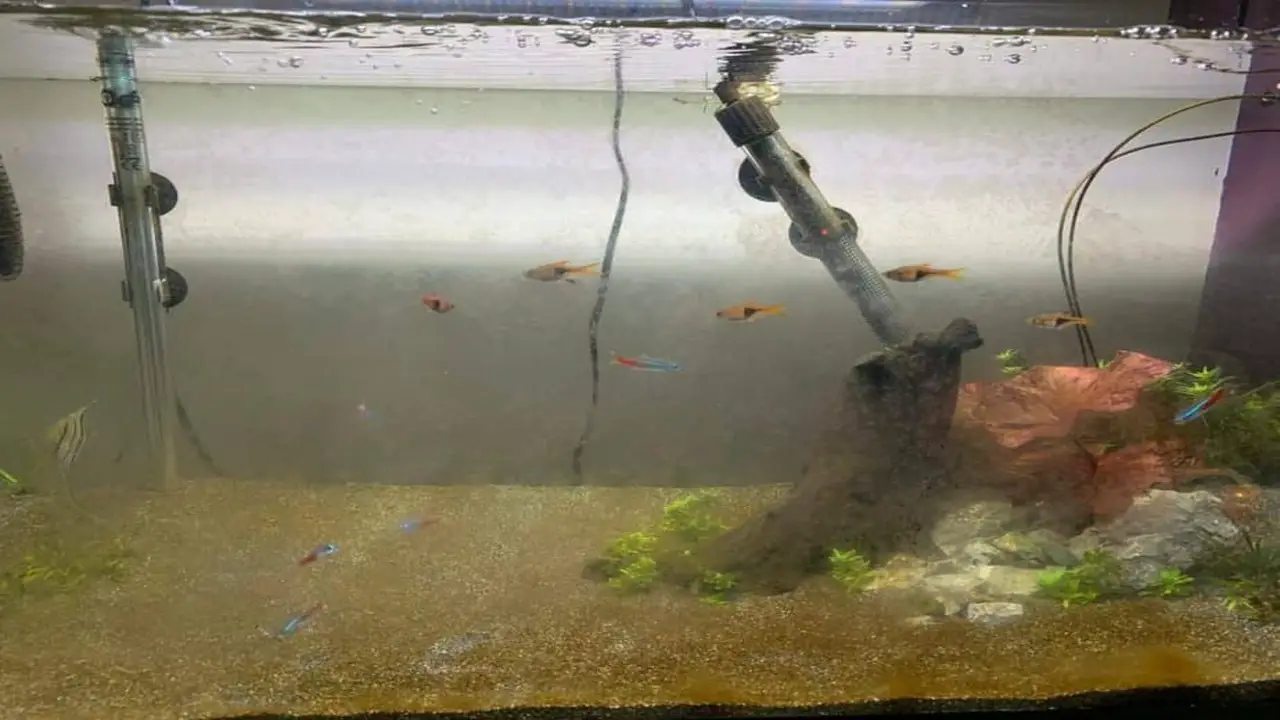
Rust is a problem that aquarium owners everywhere are starting to worry about. It’s caused by a fungus called Ceratocystis, and it can cause various health concerns, from fish deaths to respiratory problems.
You may wonder what to do if you’re concerned about rust in your aquarium. Rust is a plant disease that can be a problem in indoor and outdoor aquariums. It’s caused by the fungus Fusarium oxysporum, attacking various parts of the fish’s body, including the fins, gills, and skin.
There are several ways to combat rust in an aquarium. You can use various salt solutions (with or without additives) to kill the fungus. You can also add iron sulfate to your water to help control the growth of rust. Finally, you can remove infected fish from your tank and treat them with an appropriate antifungal agent. Here are some tips to combat rust:
Clean The Metal With Fiber Wheel Abrasive Buff Wheels
It’s important to clean the metal surface of your aquarium with a fiber wheel abrasive buff wheel before using a freshwater solution. This will remove soil and debris, preventing rust from forming. Never use harsh detergents or cleaners on your aquariums – they can damage fish and equipment. Regular cleaning is essential to keep your fish healthy in an aquarium.
Clean With Abrasive Rubber Polishers
It can be difficult to keep aquaria clean because of the built-up residue and rust. Fortunately, there are a few methods that you can use to combat both problems. Baking soda, hydrogen peroxide, and vinegar work by removing rust and scale on the water’s surface.
It would be best to use a mild abrasive rubber polisher every two weeks to remove any residues. You should also ensure that your glass aquarium is pristine with regular cleaning using an abrasive rubber polisher. These tools come with specific instructions for fighting rust in aquariums, which you should follow carefully to avoid damaging your tank or equipment.
Salt And Lemon Juice Or Vinegar
Salt and lemon juice or vinegar are great solutions for keeping rust at bay in aquariums. These household ingredients can help to remove rust stains and prevent further corrosion in your aquarium. To prevent rust from spreading:
- Add 1/4 cup of salt per gallon of water to a tank and mix well.
- Add 1/2 cup of lemon juice or vinegar per gallon of water.
- Use this mixture every week as a general rule- it will vary depending on the fish you have in your tank.
Different fish require different solutions, so research which ones work best for your collection before using them.
Baking Soda(Bicarbonate Of Soda)
Baking soda, also known as bicarbonate of soda, can be useful for addressing rust in aquariums. Rust can occur in aquariums due to the presence of metals, such as iron, that can oxidize and form rust when exposed to water. Baking soda can help neutralize the acidic conditions promoting rust formation.
Adding baking soda to the aquarium water can raise the pH level and create a more alkaline environment that is less conducive to rust development. However, it is important to use baking soda sparingly and monitor the pH levels closely, as excessive use of baking soda can disrupt the delicate balance of the aquarium ecosystem.
Is It Bad To Put Metal In A Fish Tank?
There is some debate about whether or not metal should be put in fish tanks, as it can cause problems for the fish. One of the main issues with metal in water is that it can damage the gills and fins of fish. This makes it difficult for them to breathe and leaves them susceptible to disease. Rust in aquariums can be a problem if not properly maintained.
Putting metal objects in the fish rate of rust in tanks can lead to rusting, which can release harmful substances into the water and negatively affect the health of your fish. It is important to avoid using any metal decorations or accessories in your aquarium to prevent rust from occurring. Additionally, proper maintenance is crucial in preventing rust. Regularly inspect your tank for any signs of rust and promptly remove any affected objects.
It is also important to ensure that the water parameters are properly maintained, as certain conditions, such as low pH or high levels of dissolved oxygen, can accelerate the rate of rusting. Following these guidelines and practicing proper maintenance can minimize the risk of rust becoming a problem in your aquarium.
The Difference Between Rust And Brown Algae
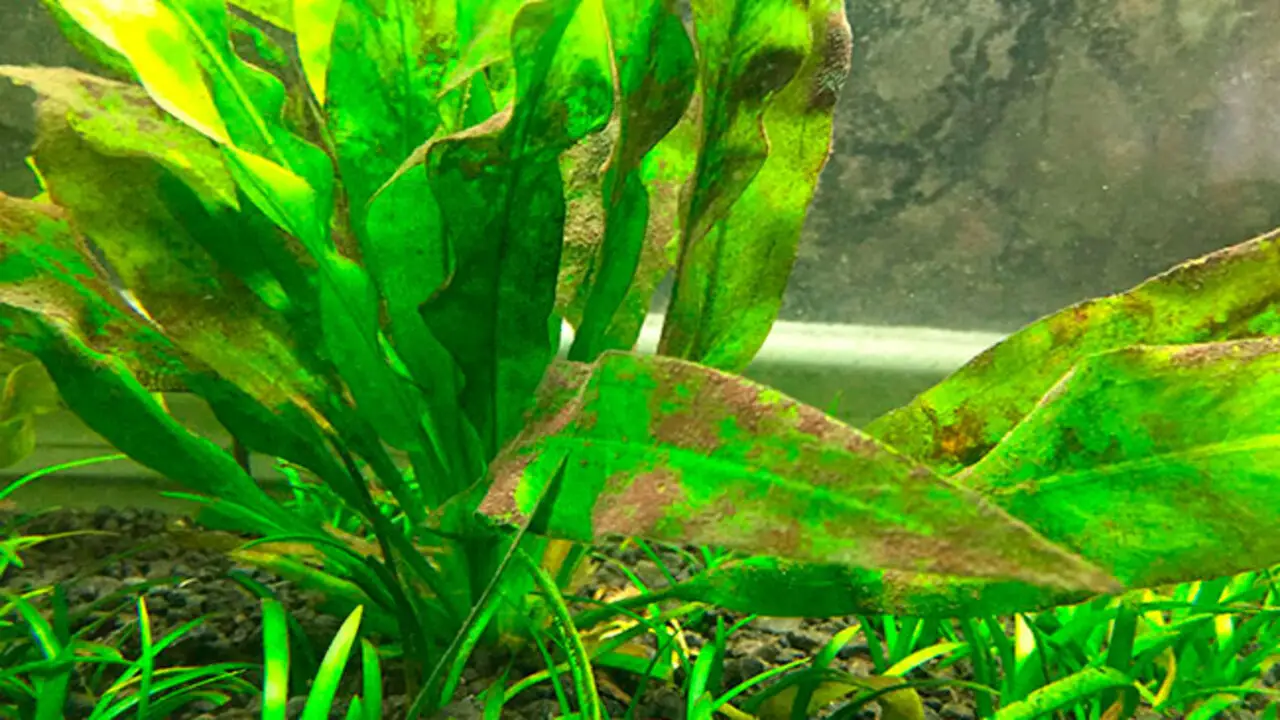
Rust is a fungus that can form on any surface, including glass and acrylic aquariums. Brown Algae is a type of algae that can form in both glass and acrylic aquariums, but it’s more harmful to the fish.
Rust is harmless to fish and shrimp but can destroy plants, leading to brown patches on their leaves or stems. Brown algae can also make fish sick and cause them to lose weight. It’s important to immediately watch for these signs and remove any afflicted plants or animals.
Rust will eat away at the acrylic, eventually leading to cracks in the tank and water entering the tank. Brown algae can also clog your filters and cause your fish to become sick. In either case, it’s important to take action as soon as you notice signs of rust or brown algae formation so that you can fix the problem before it becomes worse.
Conclusion
We have discussed “Is rust in aquariums a problem?” While rust in aquariums may not seem like a major concern, it can have serious implications for the health of your fish. It is important to regularly check for rust and take preventive measures, such as using rust-resistant materials and performing regular maintenance, to ensure a safe and healthy environment for your aquatic pets.
By being proactive and informed about the potential dangers of rust in aquariums, you can create a thriving environment for your fish to thrive in. Remember to prioritize the well-being of your fish and address any rust issues promptly to maintain a clean and healthy tank.
Frequently Asked Questions
Is Rust Bad For Aquariums?
Yes, rust can be bad for aquariums. Rust is a result of metal corrosion, and in contact with water, it can release harmful substances into the aquarium. These substances can be toxic to fish and other aquatic organisms, leading to health problems and even death.
.Is Rust Harmful To Shrimp?
Yes, rust can be harmful to shrimp. Rust is typically formed when iron or steel comes into contact with water and oxygen, forming iron oxide. When rust particles are present in the water, they can be ingested by shrimp and other aquatic organisms.
Why Does My Fish Tank Look Rusty?
Your fish tank may appear rusty due to several reasons. One possibility is that the metal components, such as the frame or screws, erode over time. This can happen if the tank is exposed to moisture or comes from low-quality materials.
Is Brown Algae Harmful To Fish?
No, brown algae is not harmful to fish. It can benefit them as it provides a natural food source and can enhance the overall health of the aquatic ecosystem. Brown algae, also known as diatoms, is a type of algae that commonly appears in aquariums and freshwater bodies.
How Do You Fix A Rusty Tank?
To fix a rusty tank, the first step is to remove any loose rust using a wire brush or sandpaper. Next, the tank must be thoroughly cleaned and dried to remove debris or moisture. Finally, the tank can be painted with a rust-resistant paint to provide a protective coating.

Aquarium passion is all about connecting with the aquatic life and providing education to the public on the importance of these creatures. We showcase a wide variety of marine life through our exhibits as well as working with schools to provide unique learning opportunities for students of all ages.

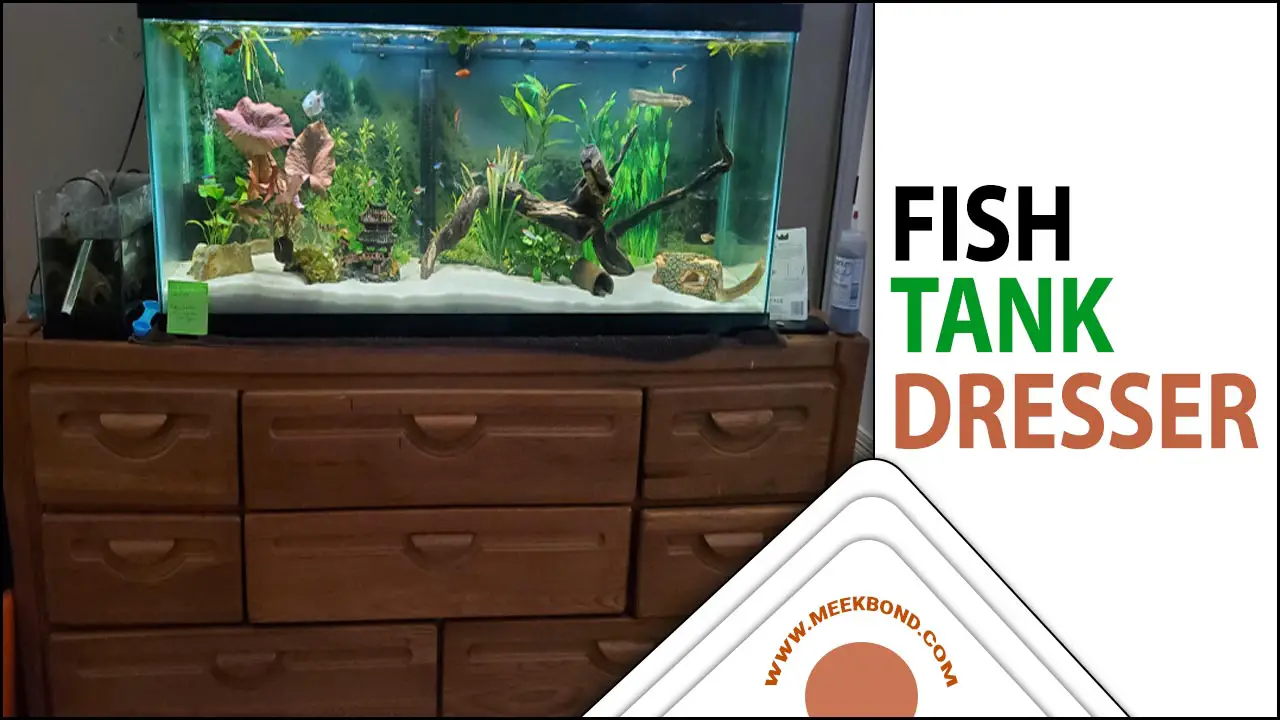
![How To Clean Aquarium After Fish Died [A Complete Guideline]](https://meekbond.com/wp-content/uploads/2022/11/How-To-Clean-Aquarium-After-Fish-Died.jpg)





